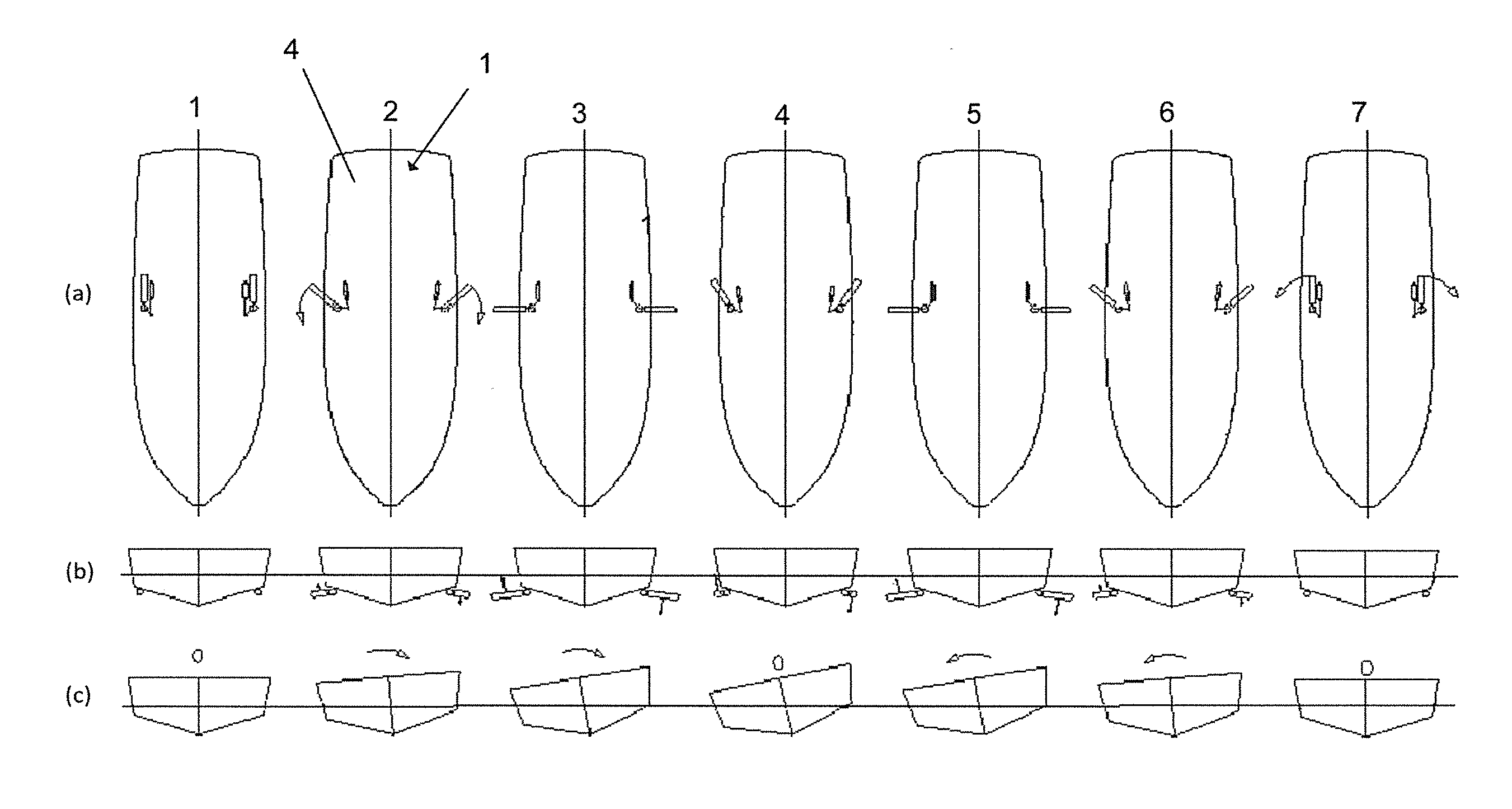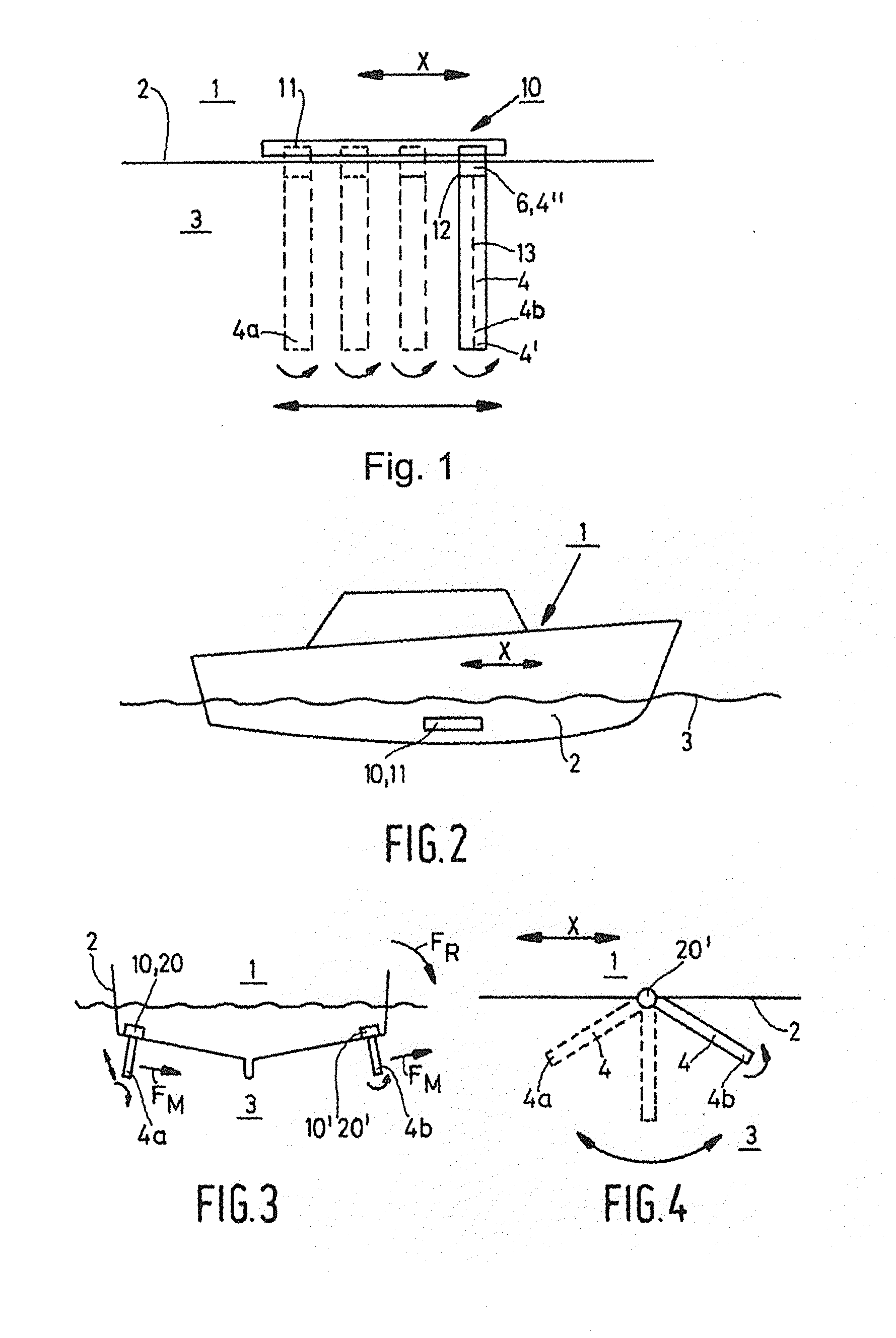Method for actively damping a ship's motion as well as such an active roll stabilisation system
- Summary
- Abstract
- Description
- Claims
- Application Information
AI Technical Summary
Benefits of technology
Problems solved by technology
Method used
Image
Examples
Embodiment Construction
[0035]In FIGS. 1-4 embodiments of prior art active stabilisation systems for use with stationary ships are shown. The stationary ship 1 floating on a water surface 3 is provided with an active stabilisation system indicated by reference numerals 10-11-20-10′-20′. This known active system for stabilising for a ship's motion as described in Dutch patent No. 1023921 is made up of rotatable stabilisation elements 4a and 4b, respectively, which each extend from a respective longitudinal side of the hull 2 of the ship below the water line.
[0036]The prior art active stabilisation system also comprises sensor means (not shown) for sensing the ship's motion, more in particular the ship's roll. On the basis of the sensing results, control signals are delivered to driving means (likewise not shown), which rotatably drive either one of the stabilisation elements 4a or 4b (depending on the correction to be carried out). Said sensor means may consist of angle sensors, speed sensors or acceleratio...
PUM
 Login to view more
Login to view more Abstract
Description
Claims
Application Information
 Login to view more
Login to view more - R&D Engineer
- R&D Manager
- IP Professional
- Industry Leading Data Capabilities
- Powerful AI technology
- Patent DNA Extraction
Browse by: Latest US Patents, China's latest patents, Technical Efficacy Thesaurus, Application Domain, Technology Topic.
© 2024 PatSnap. All rights reserved.Legal|Privacy policy|Modern Slavery Act Transparency Statement|Sitemap



